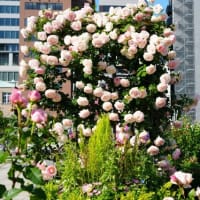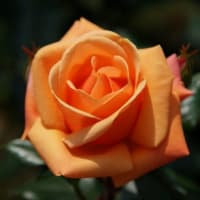The following is from "An ultimatum to the anti-Japanese" (Jee Man-won) by a former South Korean army colonel, published in its first printing on April 13, 2020.
The book is full of facts and clarifications about why Korea is the way it is.
It is a real work of art that shows the reality of Nazism in the name of anti-Japanese education to the fullest extent.
It is a must-read for Chinese and Korean Nazis who grew up with anti-Japanese education, and for those who make a living as university professors in the West and Japan, despite being only capable of considering their anti-Japanese propaganda as truth.
It is a must-read for every human being living in the 21st century.
The emphasis in the text except for the headline is mine.
About this book
The idea that Korea is the land of flowers and Japan is the land of demons was a false image created by the communists.
Joseon was born in 1392, and 27 kings with the surname of Yi ruled for 518 years until 1910. As described by foreigners, the capital, Hanyang, was filthy, rife with contagious diseases, and a frontier of lies, intrigue, and plunder.
Women were the slaves of men, the tools of production that produced enslaved people for the yangban.
Ten percent of the yangban enslaved ninety percent of their kind, and they've been indulging in that pleasure.
The tribal nation that was left behind by the law of the jungle that eventually came and died was Joseon.
Japan, which ruled such an uncivilized country, built Japanese-style buildings, wide roads, railroads and trains, dams and electricity, and schools to provide modern education in just 30 years.
He scientifically developed Hangeul, which Yangsangun buried in 1504, conducted Korean language examinations and provided Korean language allowances to those who passed, designated October 9 as Hangeul Day in 1928, and led the use of paper money instead of heavy cast coins.
Without Yukichi Fukuzawa, whose name is printed on Japan's 10,000 yen bill, Koreans would not have the words they use today, nor would they have the pipeline to communicate with the rest of the world.
Japan's first thing was moral education, such as not lying and being respectful to one's parents, but Kim Dae-jung and Lee Hae-san buried that education.
Since that time, children have been raised instead of educated.
Looking at today's young generation, it seems that the personality of a person raised without education is more dangerous than that of a beast.
Japan's wealth in Korea for 40 years totaled $5.2 billion, with $2.3 billion in South Korea and $2.9 billion in North Korea.
The U.S. seized the $2.3 billion in property that Japan left behind in South Korea (Korea) and gave it to the Syngman Rhee regime.
It is eight times more than the $300 million in claim funds received in 1965.
It accounted for 80 percent of the total economy of the newly established Republic of Korea.
The U.S. searched the "defeated Japanese" pockets and luggage and sent them home with nothing but the clothes on their backs.
Park Chung Hee built up the Korean economy for 18 years, using this as a springboard.
Without the help of Japan, there would have been no Gyeongbu Expressway, no Pohang Steel Plant, no heavy chemical industry, no Soyang River Dam, and no Pohang Steel Plant.
Without Japan's supply of materials, parts, technology, and capital, the assembly industry that supports Korea would have had to go out of business.
This book is richly illustrated with photographs and factual materials.
It was written solely based on facts.
From the photos and materials, the Chosun and Japan that the people of the Korean Peninsula know are different from the actual Chosun and Japan.
It is the opposite of the image of the two countries that is imprinted in the minds of the people of the Korean Peninsula.
It is a lie that Korea is a land of beautiful flowers, and it is a lie that Japan is a land of demons, it is a lie that Japan buried Hangeul, it is a lie about comfort women, it is a lie about forced conscription, it is a lie about everything.
Today's foremost companies in Korea are almost without exception companies that grew out of Japan's companies.
Japan is not a country to be hated, but a country that has provided benefits and is indispensable for the Korean economy, which must accept the triangular economic structure of Japan, the United States, and South Korea as its fate.
So who did this distortion, and for what purpose?
My fellow Koreans should definitely know.
Prologue
The Republic of Korea is ruled by the ghosts of the May 18 Gwangju Incident.
As soon as he seized power, Moon Jae-in declared with his first words, "We will enact the Constitution of May 18.
"We will enact the 5.18 Constitution."
Many parts of society are being transformed into communist cell organizations.
The idea is to create a "5.18 Republic."
For 18 years, from 2002 to the present, I have struggled with 200,000 pages of records to find the truth about 5.18.
And I have written nine 5.18 documentary books of more than 3,000 pages.
The results of my research led to the collapse of the sanctuary of 5.18, which no one had ever been able to access.
The results of this research have spread throughout Korean society, and the brakes have been put on the runaway 5.18 sanctification by the Moon Jae-in forces.
The group trying to sanctify 5.18 is the Kim Il Sung following forces.
However, they have not produced any theoretical basis to refute the author's scientific research results.
In the scientific realm, the defenders of 5.18 have been defeated.
But the forces defending 5.18 did not admit defeat.
Mass assaults and lawsuits followed relentlessly.
They wanted to take the author's research results to court and use political power and violence to suppress them.
In addition, the trial had to be held in Gwangju.
For 18 years, from October 2002, I was assaulted and lynched by 5.18 advocates and forcibly imprisoned in Gwangju Prison.
Although I work in Seoul and live near Seoul, Article 2 of the Code of Civil Procedure and Article 4 of the Code of Criminal Procedure stipulate that I be tried in Seoul.
However, all trials related to the "May 18 Gwangju Incident" are under the exclusive jurisdiction of the Gwangju District Court.
It means that the Gwangju District Court has the right to judge the case because the 5.18 Movement for Democracy is the honor of Gwangju, and denying the 5.18 Movement for Democracy is defaming the honor of Gwangju.
Such an argument is nothing but a steamroller.
The "May 18 Gwangju Incident" is a clash of regional sentiments that have separated Jeolla Province from the rest of Korea for hundreds of years and a sharp conflict of ideologies between the left and the right.
It is truly a shameful act of conflict of interest.
Jeolla Province has always been a land with a robust communist spirit, and the people of other regions have shunned the people of this region. Their resentment and grief have become the grudge of pansori (a kind of Japanese Rōkyoku).
North Korea is the only country that can relieve their grief.
Therefore, partisans are cultivated in this region, and education is provided to foster hostility toward the Republic of Korea.
The "5.18 Gwangju Incident" that occurred in Gwangju, Jeollanam-do, in May 1980 was not a pure democratic movement but the work of North Korea.
While the results of this study have led more than half of the population to believe that 5.18 was a guerrilla war started by North Korea, the people of Jeolla Province vigorously deny such a theory.
If they only denied it, they would shout and jump at me to grab me by the chest, even on a crowded train.
It is definitely the work of Korean DNA.
It is why 5.18 is a place to confront low-level local feelings and conflict of ideas.
As a scholar, I wrote a book on the history of 5.18, but the people of Jeolla Province filed dozens of lawsuits against me because they did not like the book's content.
The Jeolla Province judges accepted the Jeolla people's claims in their ruling.
It is nothing but an act of giving a place to the red forces.
It is even more severe than Kim Jong-un in that it defies logic.
I have appealed this steamroller to the Grand Court (Supreme Court).
I asked for my case to be transferred to Seoul, but the Supreme Court has served as a servant of the Gwangju District Court since 2002 until now.
In 2002, the author, who lived in the suburbs of Seoul, was suddenly handcuffed by the Gwangju prosecutors and forcibly sent to the distant city of Gwangju.
I was handcuffed behind my back for the entire six hours before being sent to Gwangju and the two hours of the investigation.
An average person would not have been able to endure even ten minutes of this.
The four public security officials, who were about the same age as my son, poked and prodded me and verbally abused me.
It was literal living hell.
It was the first time I learned that the violence was the May 18 Democracy Movement and that Gwangju was a hellhole.
In 1981, the Supreme Court ruled that 5.18 was a case of civil war initiated by Kim Dae-jung.
This ruling became common knowledge in society for the next 17 years.
However, as soon as the communist forces took over the society, the Supreme Court in 1997 reopened the case of the "May 18 Gwangju Incident" in defiance of the Constitution.
The reason for the retrial was not that there were grounds for a retrial, but that in a world where loyalists and traitors have been replaced, the trial was forced to be redone by the "May 18 Special Law," which was enacted by a coalition of politicians separated by their interests.
In 1997, the Supreme Court, filled with communists, overturned the 1981 ruling, saying that 5.18 was a case of civil war initiated by Jeon Doo-hwan.
The loyalists and the traitors had been swapped.
For the next 20 years, 5.18 became a sacred place that no one could touch.
The atmosphere was such that even the letter 5 of 5.18 was not uttered.
I was the only person who challenged this sanctuary.
This article continues.
















